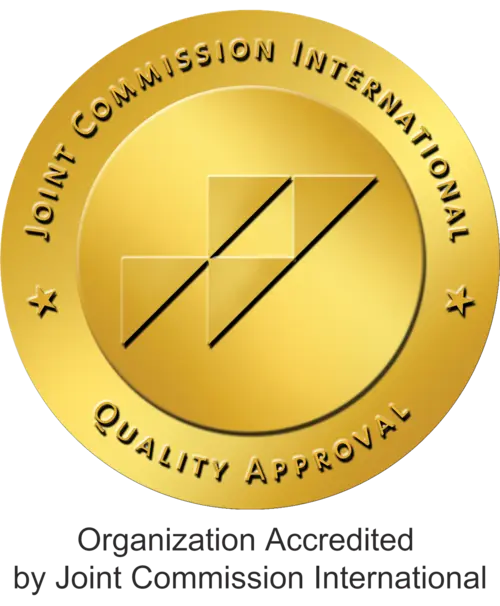Obsessive Compulsive Disorder
Obsessive Compulsive Disorder - Obsession Disease
Obsessive-compulsive disorder (OCD), an anxiety-type disorder, is a disease that restricts people by repeated cycle of thought and behavior. People with obsessive-compulsive disorder become restless due to repetitive and stressful thoughts, fears, or images (obsessions) they cannot control. The anxiety created by these thoughts causes the need to urgently perform some rituals or routines (compulsions). Rituals are made by attempting to prevent or eliminate obsessive thoughts.
It temporarily stops the ritual anxiety, when obsessive thoughts occur again, the person must repeat the ritual immediately. This OCD cycle can steal hours from a person's day, preventing them from doing their normal daily work.
People with obsessive-compulsive disorder may be aware that their obsessions and obsessions are unreal or illogical, but they cannot stop themselves.
What are the symptoms of OCD (Obsessive Compulsive Disorder)?
Common symptoms of obsession:
• Fear of contamination or germ contamination
• be afraid to harm anyone else
• be afraid to make mistakes
• be afraid of being disgraced or acting socially unacceptable
• be afraid to think devilish or sinful
• The need for order, symmetry, perfection
• Extreme suspicion and constant need for assurance
Common symptoms of compulsion:
Repeated washing, showering or washing hands
• Refuse to shake hands or touch the door knocker
• Controlling things like locks, stoves, etc.
Continuous counting from inside or loud while performing routine work
• Organizing something in a certain way
• Eating in a certain order
• Getting stuck with words, images, or thoughts that are often bothersome, mind-blowing, and sleep-disrupting
• Repeating certain words, phrases or prayers
• The need to do things a certain number of times
• Collecting or accumulating things of no value
What causes obsessive-compulsive disorder?
Although the cause is not fully understood, research has shown that biological and environmental factors may be associated with OCD.
Biological factors: The brain is a complex structure. There are billions of nerve cells called neurons that are needed for the normal functioning of the body. Neurons communicate via electrical signals. Chemicals called neurotransmitters help transmit these signals from neuron to neuron. Studies have found a link between the lowering of the level of neurotransmitter called serotonin and the development of OCD. There is also evidence that the imbalance of serotonin has passed from parent to child. This is an indication that obsessive-compulsive disorder can be genetic. In addition, certain areas of the brain are affected by serotonin imbalance, which leads to OCD. This problem appears to be related to brain pathways, which are linked to areas of the brain that filter messages involving common sense and planning-related areas and bodily movements.
Research has also identified a relationship between a certain type of infection caused by Streptococcus bacteria and OCD. If this infection recurs and is not treated, it can lead to the development of OCD and other disorders in children.
Environmental factors: Some environmental stressors can trigger OCD. Certain environmental factors can worsen this discomfort in the person. These;
• Harassment
• Vital changes
•Illness
• The death of a loved one
• Work or school changes or problems
• Relationship concerns
How common is OCD (Obsessive Compulsive Disorder)?
OCD affects 3.3 million adults and 1 million children and young people in the USA. Discomfort first occurs in childhood, youth and early adulthood. Regardless of race and socioeconomic infrastructure, it is seen equally in all men and women.
How is OCD (Obsessive Compulsive Disorder) diagnosed?
Laboratory test is not performed for OCD. The doctor evaluates the patient's symptoms, including when he devotes it to rituals, and makes the diagnosis.
How is OCD (Obsessive Compulsive Disorder) treated?
OCD does not pass by itself, so it is important to be treated. The best treatment method is drug and cognitive behavior therapy.
Cognitive behavioral therapy: The aim of cognitive behavioral therapy is to ensure that those with obsessive-compulsive disorder face their fears and reduce anxiety without performing their rituals. This therapy also focuses on reducing exaggerated or disastrous thoughts that are common in those with obsessive-compulsive disorder.
Drug Treatment Tricyclic antidepressants, selective serotonin reuptake inhibitors can help treat OCD. In severe cases where patients do not respond to drug and cognitive behavioral therapy, Electroconvulsive Therapy (ECT) or neurosurgery can be used. During ECT, electrodes are attached to the patient's head and a series of electrical shocks that cause seizures are given to the brain, which causes the release of neurotransmitters in the brain.
As a result of continuous treatment, patients lead a normal or near normal life. Early diagnosis always reduces treatment time.




